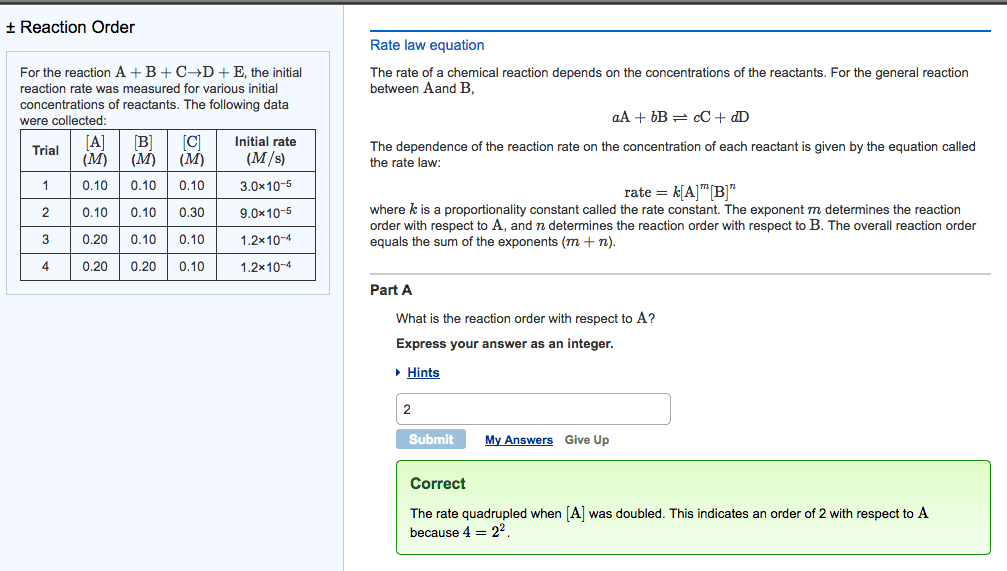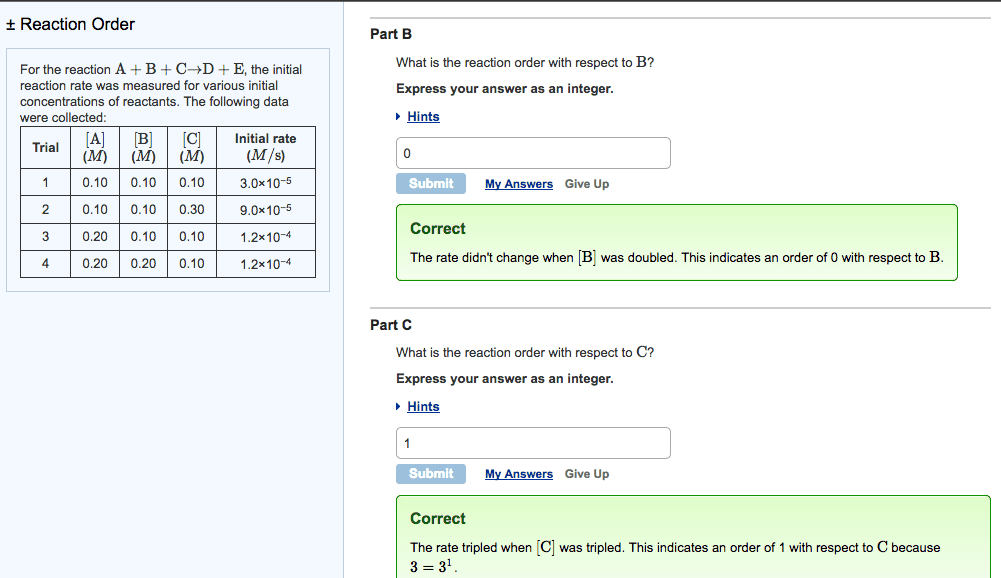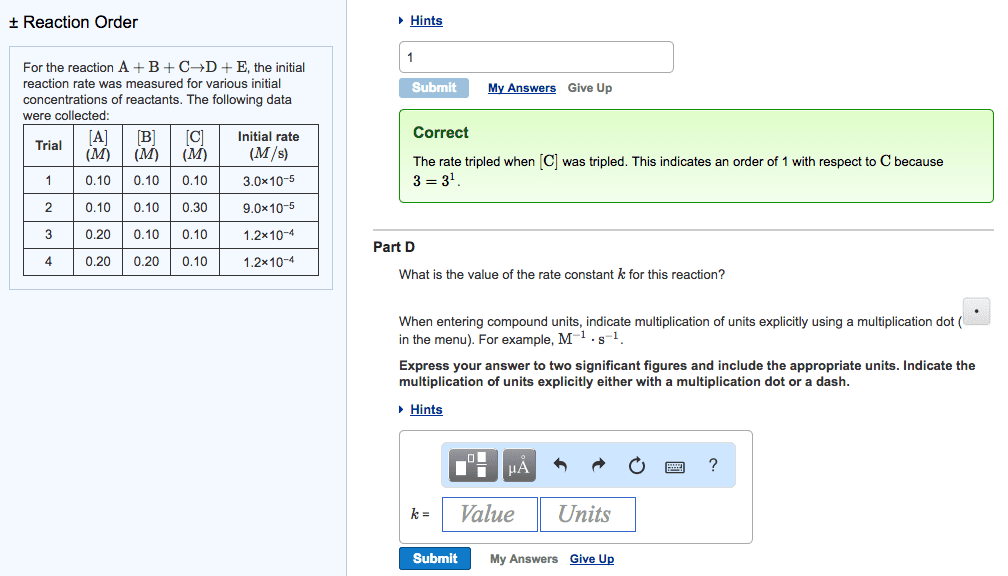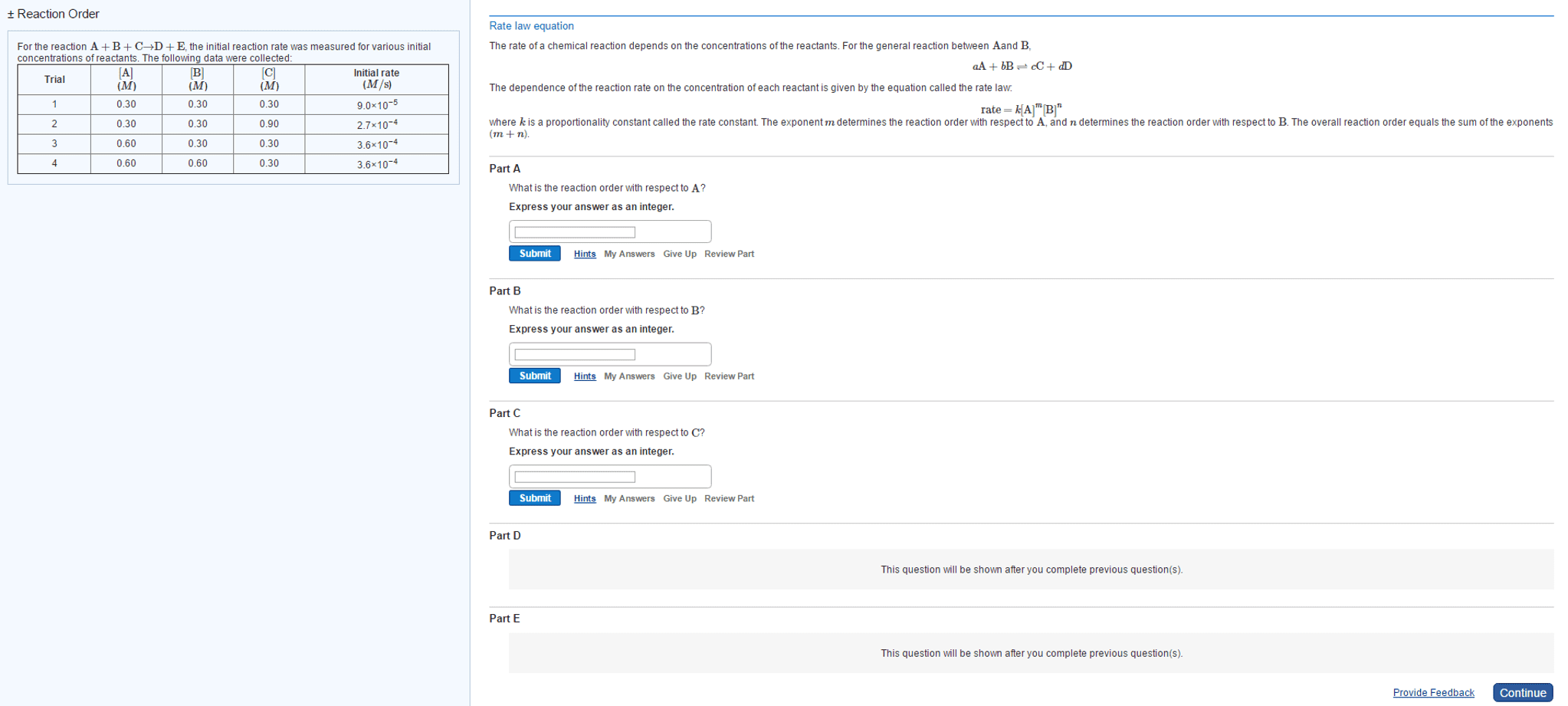For the reaction A+B+CâD+E , the initial reaction rate was measured for various initial concentrations of reactants. The following data were collected:
Trial [A]
(M ) [B]
(M ) [C]
(M ) Initial rate
(M/s ) 1 0.20 0.20 0.20 6.0Ã10â5 2 0.20 0.20 0.60 1.8Ã10â4 3 0.40 0.20 0.20 2.4Ã10â4 4 0.40 0.40 0.20 2.4Ã10â4
The rate of a chemical reaction depends on the concentrations of the reactants. For the general reaction between A and B ,
aA+bBâcC+dD
The dependence of the reaction rate on the concentration of each reactant is given by the equation called the rate law:
rate=k[A]^m[B]^n
where k is a proportionality constant called the rate constant. The exponent m determines the reaction order with respect to A , and n determines the reaction order with respect to B . The overall reaction order equals the sum of the exponents (m+n ).
Part A
What is the reaction order with respect to A ?
Express your answer as an integer.
Part B
What is the reaction order with respect to B ?
Express your answer as an integer.
Part C
What is the reaction order with respect to C ?
Express your answer as an integer.
For the reaction A+B+CâD+E , the initial reaction rate was measured for various initial concentrations of reactants. The following data were collected:
| Trial | [A] (M ) | [B] (M ) | [C] (M ) | Initial rate (M/s ) |
| 1 | 0.20 | 0.20 | 0.20 | 6.0Ã10â5 |
| 2 | 0.20 | 0.20 | 0.60 | 1.8Ã10â4 |
| 3 | 0.40 | 0.20 | 0.20 | 2.4Ã10â4 |
| 4 | 0.40 | 0.40 | 0.20 | 2.4Ã10â4 |
The rate of a chemical reaction depends on the concentrations of the reactants. For the general reaction between A and B ,
aA+bBâcC+dD
The dependence of the reaction rate on the concentration of each reactant is given by the equation called the rate law:
rate=k[A]^m[B]^n
where k is a proportionality constant called the rate constant. The exponent m determines the reaction order with respect to A , and n determines the reaction order with respect to B . The overall reaction order equals the sum of the exponents (m+n ).
Part A
What is the reaction order with respect to A ?
Express your answer as an integer.
Part B
What is the reaction order with respect to B ?
Express your answer as an integer.
Part C
What is the reaction order with respect to C ?
Express your answer as an integer.




